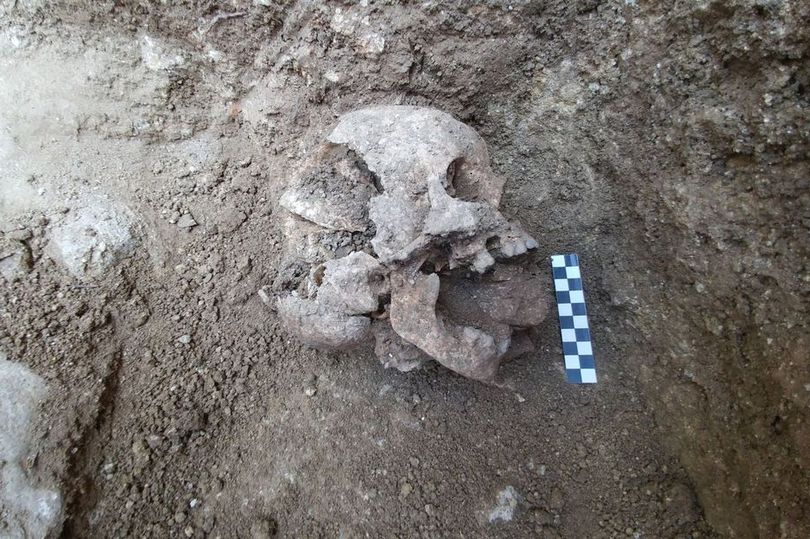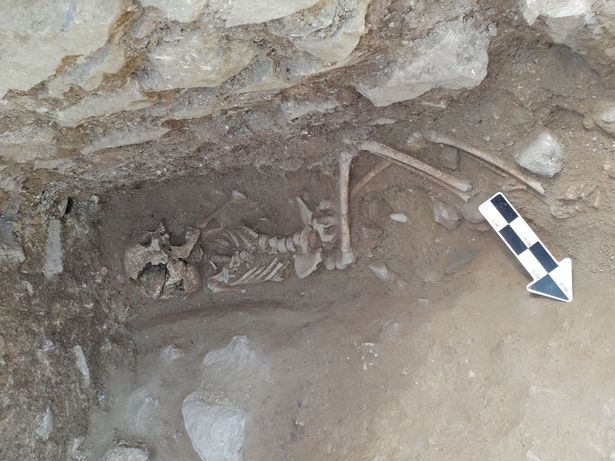Archaeologists discovered a 1,550-year-old ‘vampire child’ buried in Italy

Archaeologists discovered a 1,550-year-old ‘vampire child’ buried in Italy
Archaeologists have found the body of a 10-year-old child at an ancient Roman site in Italy. The 1,550-year-old “vampire burial” of a child with a rock stuffed into his or her mouth has been found in an ancient cemetery in Lugnano.

The remains were discovered by archaeologists from the University of Arizona (UA) and Stanford University.
Scientists believe the child was ritually buried to prevent it rising again from the dead.
The uncommon so-called “vampire burial” was described as “extremely eerie and weird” by archaeologist and professor David Soren, who has been unearthing the site in Teverina since 1987.
Other bizarre remains have been Found at this cemetery, called La Necropoli dei Bambini, or the Cemetery of the Babies,including the skeletons of babies and children found buried beside raven talons, toad bones and bronze cauldrons filled with the remains of sacrificed puppies.
In one case, the skeleton of a 3-year-old little girl at the cemetery was found with stones holding down her hands and feet, the researchers said.

In fact, until now, the oldest person Discovered that buried at the cemetery was the 3-year-old, and archaeologists assumed the grounds had been reserved for newborn child and toddlers.
“There are still sections of the burial ground that we haven’t excavated yet, so we don’t know if we will find other older kids,”
Bioarcheologist Jordan Wilson, a doctoral student in anthropology at the University of Arizona who analyses the bones in Italy, said in the statement.
The cemetery was erected during the 5th century, within a 1st century Roman villa. During the 5th century, a deadly malaria outbreak swept through the area, the archaeologists noted.
Rising from the dead?
The analysts said they suspect the child died of malaria, even though DNA testing has not been conducted on the child’s remains.
Other children buried in the cemetery are known to have died of malaria sickness, and this child has an abscessed tooth, which is a side effect of malaria, the researchers said.

“We know that the Romans were very particularly concerned with this [the spread of disease] and would even go to the extent of employing witchcraft to keep the evil — whatever is polluting the body — from coming out,” Soren stated, adding that in this case the “evil” may have been malaria.
The scientists will continue excavations at Lugnano next summer.
Other vampire burials have been Found in the past in Italy and in Poland.
An 18th-century example of one such possible burial was Found recently at the Church of the Holy Trinity in Byszewo, Poland, reported Sebastian Nowak, an analyst at Nicolaus Copernicus University in Torun, Poland.
Nowak portrayed the finding at the European Association of Archaeologists annual meeting held in September in Barcelona, Spain.
The UA and Stanford academic included: “This just further highlights how unique the infant – or now, rather, child – cemetery at Lugnano is.”
“We know that the Romans were very much worried with this and would even go to the extent of employing witchcraft to keep the evil – whatever is contaminating the body – from coming out,” said Professor Soren.
“It’s a very human thing to have complicated feelings about the dead and wonder if that’s really the end,” Mr Wilson said.